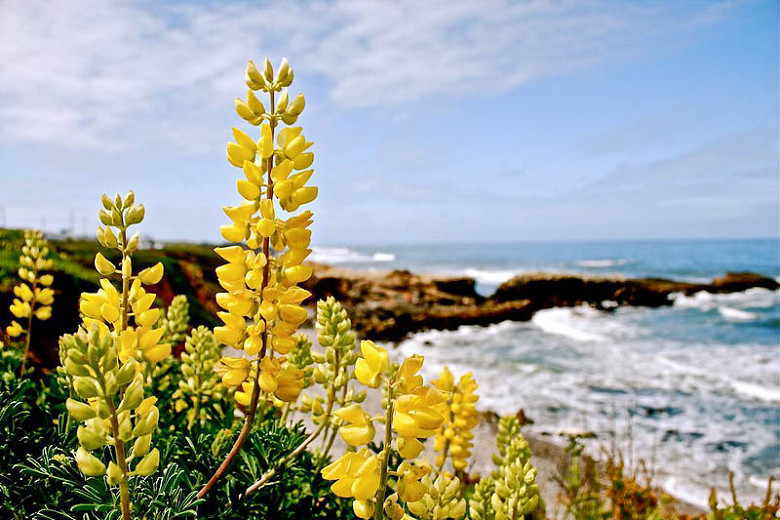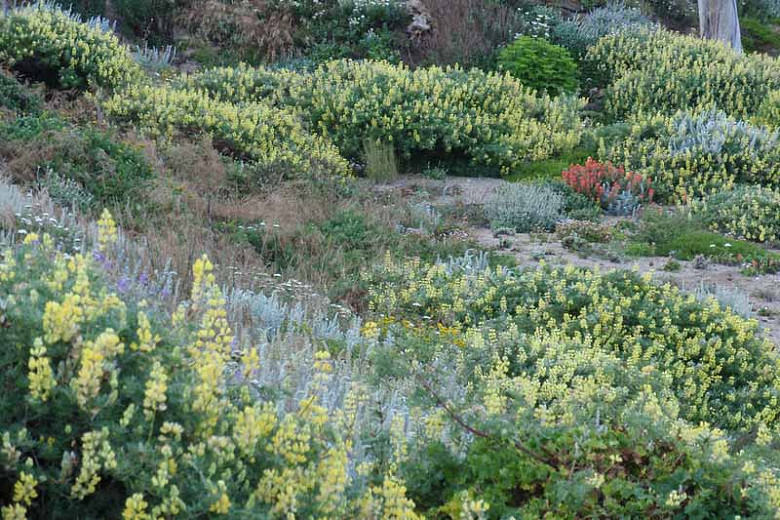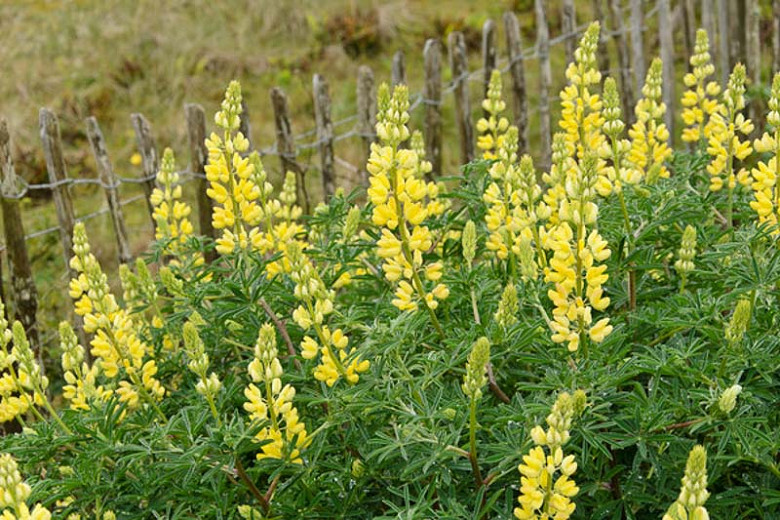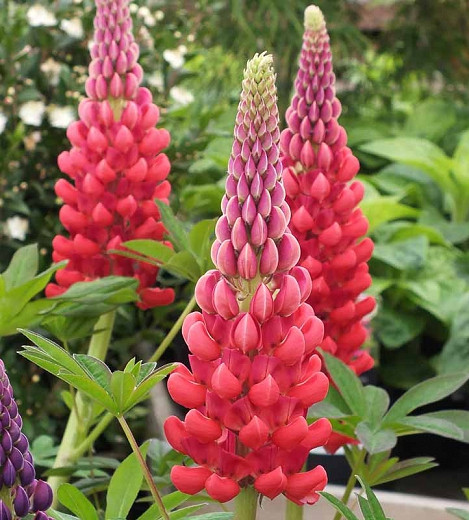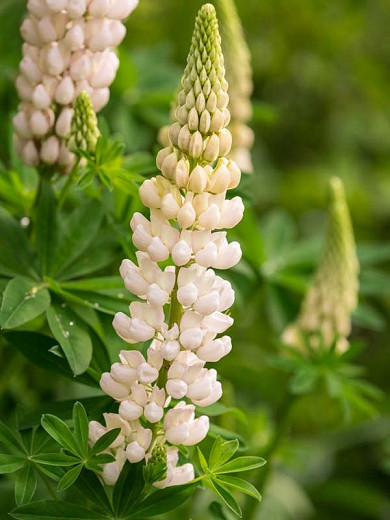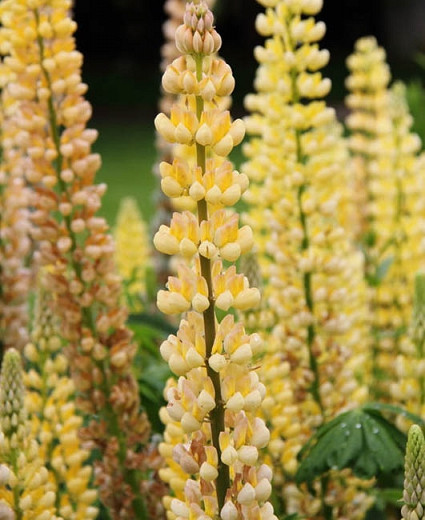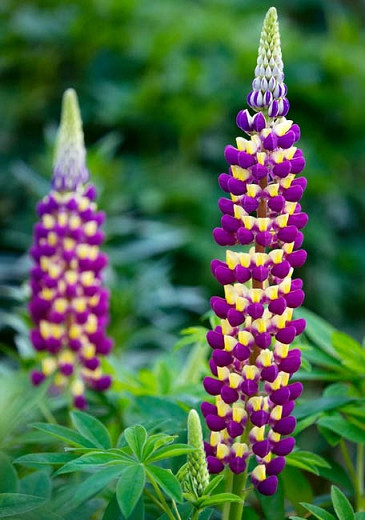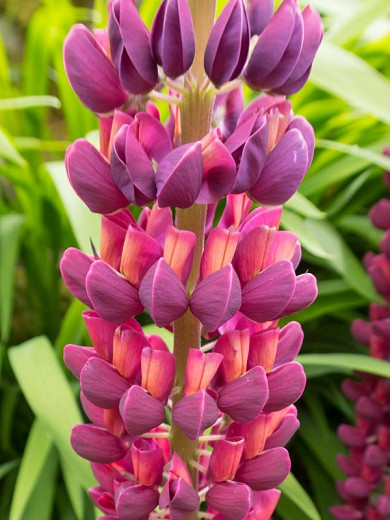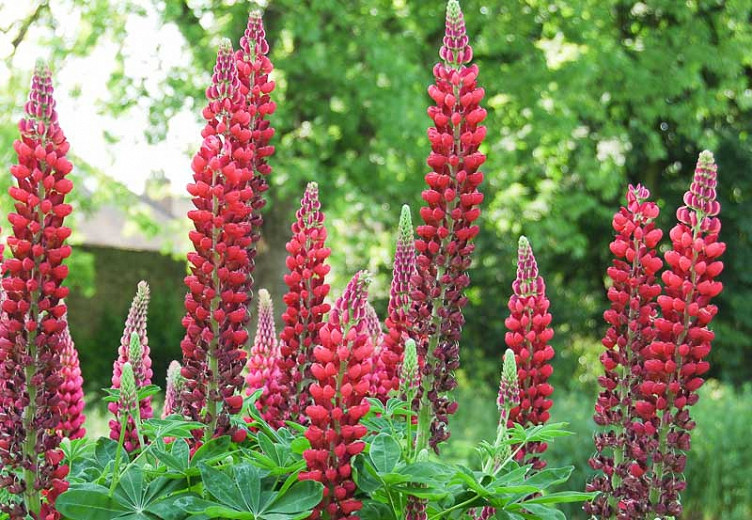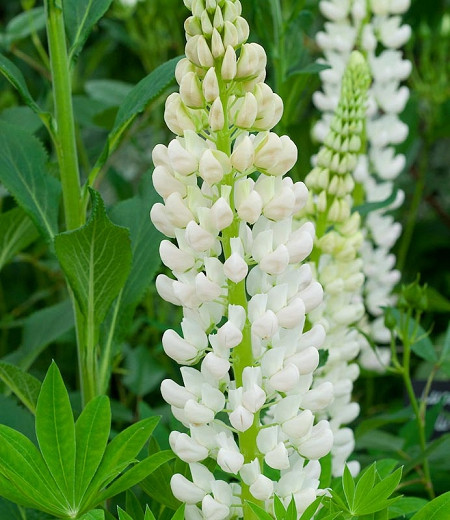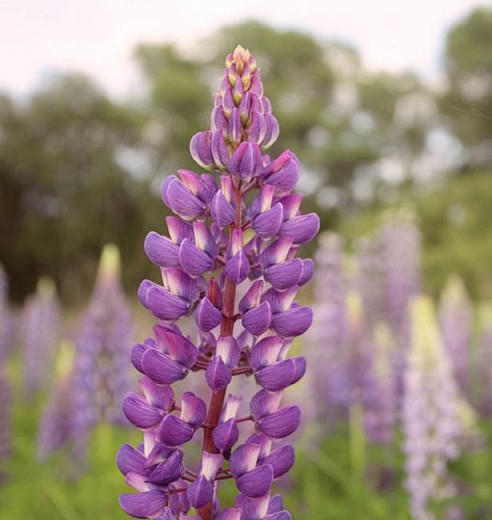Lupinus arboreus (Tree Lupine)
Very showy and sweetly fragrant, Lupinus arboreus (Tree Lupine) is a fast-growing evergreen shrub forming a large, round, bushy mound of silky, dark green, palmately compound leaves with 5-12 leaflets. In early spring to early summer, erect racemes, up to 12 in. long (30 cm), of usually yellow pea-shaped flowers can be admired. Lilac, blue, white or mixed flowering forms are also known. They are attractive to bees, butterflies and many pollinators. The blossoms are borne at the tips of short branches well above the handsome foliage. They give way to relatively large seeds with corresponding high seedling survival. Native to coastal areas of western North America, Tree Lupine prefers to grow on bluffs, dunes and slopes. Ideal for coastal situations, Tree Lupine can grow somewhat aggressively. Once a population becomes established, it spreads short distances by rodents or by seeds rolling from parent plants down dune slopes.
- Recipient of the prestigious Award of Garden Merit of the Royal Horticultural Society.
- Grows up to 5-8 ft. tall and wide (150-240 cm).
- Thrives in full sun in sandy, well-drained soils. Tolerates partial shade, but best flower production occurs in full sun. Requires little to no water. Water maximum twice per month in summer after the plant is established.
- An excellent choice for beds and borders, coastal gardens, cottage gardens, prairies and meadows.
- No serious pest or disease issues. Keep an eye out for slugs, snails, aphids, powdery mildew. Deer resistant.
- Propagate by seed or basal cuttings.
- While Lupinus arboreus is native from the San Francisco Bay Area south, it is considered invasive further north. Around Humboldt Bay, it invades coastal dunes, replacing a diverse plant community with a dense monoculture of shrubs.
- All parts, particularly the seeds, may cause severe discomfort if ingested. Toxic only if eaten in large quantities. Wear gloves and wash hands after handling.
- Toxic to dogs, toxic to cats, toxic to horses, toxic to humans.
- Native to British Columbia, California, Oregon, Washington.
Requirements
| Hardiness | 7 – 10 |
|---|---|
| Heat Zones | 9 – 10 |
| Climate Zones | 4, 5, 14, 15, 16, 17, 22, 23, 24 |
| Plant Type | Shrubs |
| Plant Family | Lupinus – Lupines |
| Exposure | Full Sun, Partial Sun |
| Season of Interest | Spring (Early,Mid,Late)Summer (Early) |
| Height | 5' – 8' (150cm – 240cm) |
| Spread | 5' – 8' (150cm – 240cm) |
| Spacing | 60″ – 96″ (150cm – 240cm) |
| Water Needs | Low, Average |
| Maintenance | Low |
| Soil Type | Loam, Sand |
| Soil pH | Acid, Neutral |
| Soil Drainage | Well-Drained |
| Characteristics | Cut Flowers, Fragrant, Showy, Evergreen |
| Native Plants | United States, California, Pacific Northwest, Oregon, Washington |
| Tolerance | Deer |
| Attracts | Bees, Birds, Butterflies |
| Garden Uses | Beds and Borders |
| Garden Styles | Coastal Garden, Informal and Cottage, Prairie and Meadow |
